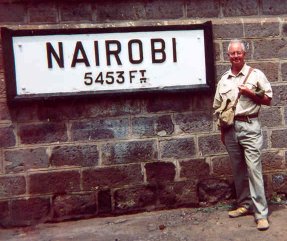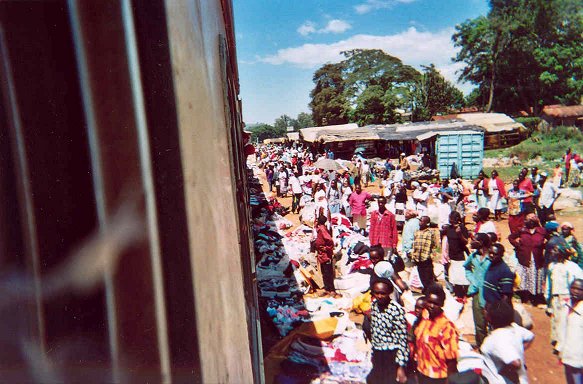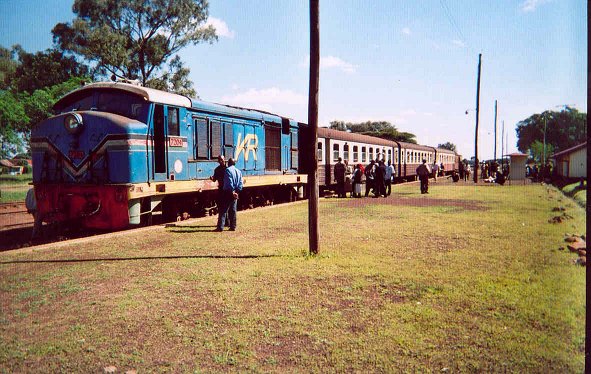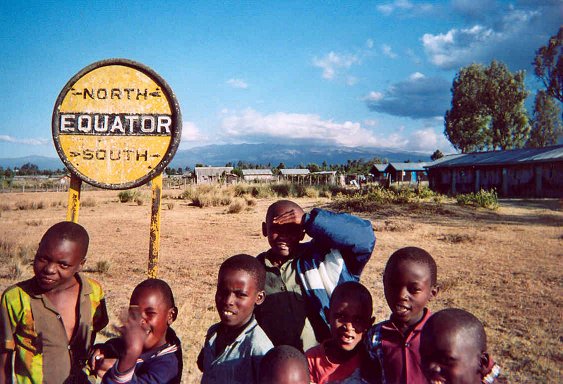|
|
Kenya Railways Nairobi to Nanyuki 2004 Iain Mulligan |
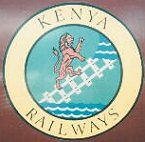 |
|
|
|
Still showing altitude in feet, the traditional East African Railways station nameboards have survived at Nairobi. Many have had the altitude metricated - to several decimal places.
Current KR passenger trains are the
nightly ones to and from Mombasa; the three times a week overnight to
Kisumu, with 3 coaches going on to Butere; and more "commuter" trains
around Nairobi, now going as far as Limuru, Thika, and the airport siding at
Embakasi. But for a daylight ride there is a Saturday train from
Nairobi to Nanyuki, coming back on Sunday. |
||
|
|
|||
| Vast local market along the track at Karatina. Around Thika all the old sisal plantations have been replaced with pineapples and the del Monte cannery beyond Thika has dedicated sidings and uses containers. Thika still has a small shunting engine. At Maragua hordes of mostly women and children attend the station selling bananas, mealies, nuts, sodas, etc for lunch. On the station nameboards at Muranga you can still make out the raised but painted over earlier name of Fort Hall - PHOTO Iain Mulligan | |||
|
|
|||
|
7204 with its rake of Swedish coaches and brake van at Naro Moru before going on to Nanyuki where it arrived at 1745. The train left Nanyuki for the return working at 8am on the Sunday. The routine was similar stopping frequently for groups of people to get on or off. Going back down the 4% grade the smell of burning brakes was very strong, and a CXR stop at Sagana confirmed the brakes were indeed red hot. On schedule back at Nairobi at 1730 - PHOTO Iain Mulligan |
|||
|
|
|||
|
Kids on the Equator with an obscured
Mount Kenya forming the backdrop. Half an hour later, Mount Kenya was
completely clear - PHOTO Iain Mulligan
The fares were carefully calculated on a per km rate, Nairobi to Nanyuki cost shs 160 about £1.35 (GBP). All the telegraph equipment and Tyers token machines are gone. The poles have no wires. Line clear is a paper system and mobile phones, but with never more than one train a day the whole 130 mile line could be treated as one long siding. |
|||
